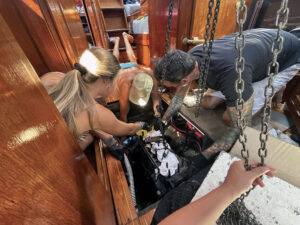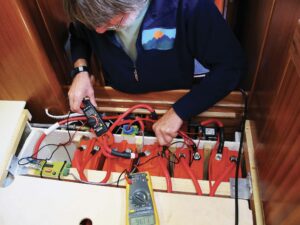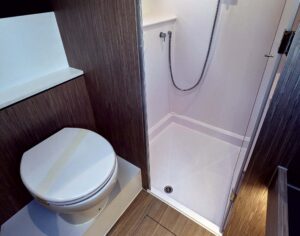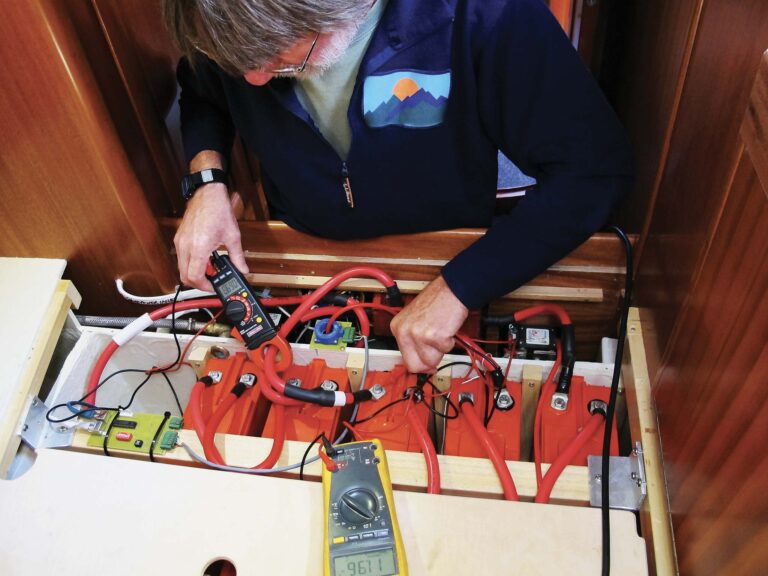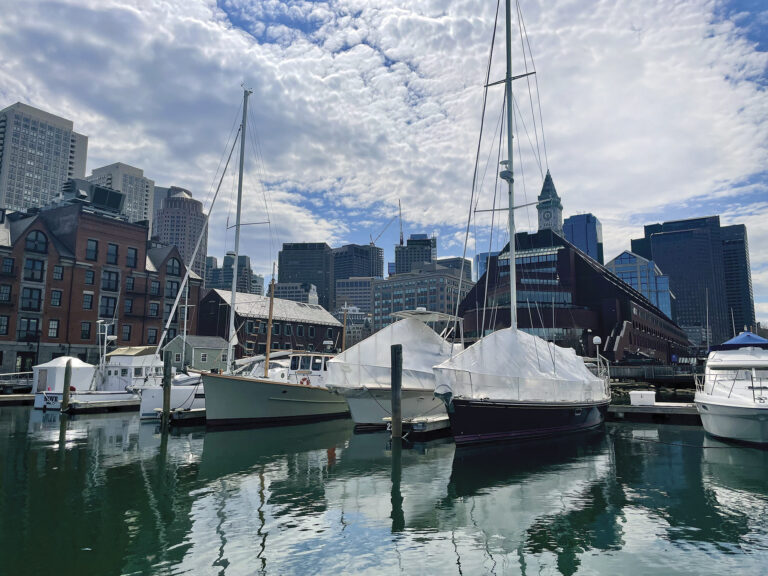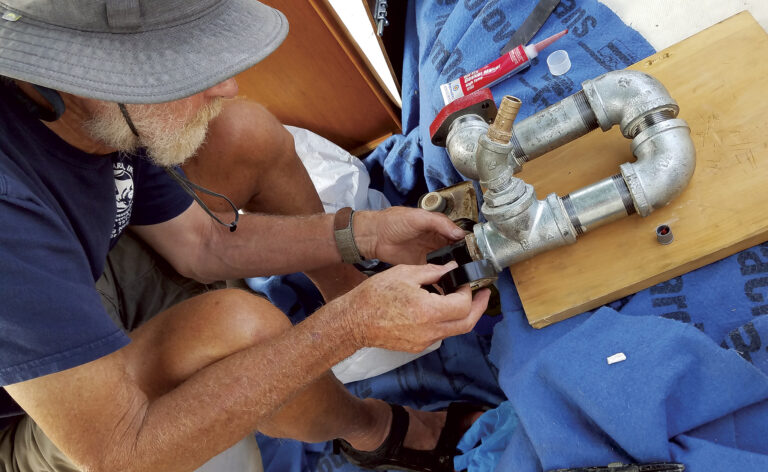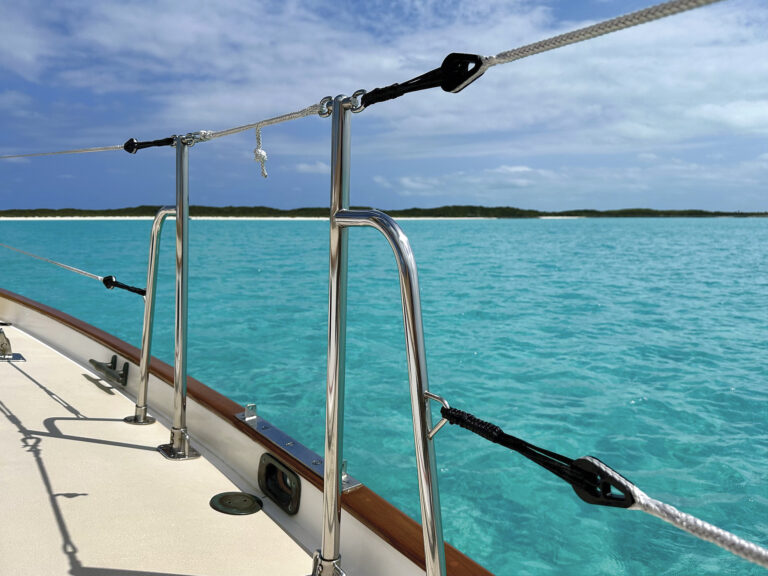I used the larger Flexpoxy dispenserideal for bigger projects. The smaller cartridge that fits in a standard caulking gun should suit most needs
Like all owners of older boats who like to do their own work, I’m extremely familiar with epoxy resin. I reckon I’ve used a good few gallons of it, for both major projects and little jobs where only small amounts are needed.
It’s for these latter tasks—sometimes involving no more than filling a few screw holes or bonding together small pieces of wood or fiberglass—that I’ve often cursed the need to get out the two cans of resin and hardener and mixing the required amounts. I’ve usually ended up with more resin than I can use, and that stuff’s too expensive to waste. Also, the epoxy invariably needs to be thickened so that it stays put, fills gaps, doesn’t sag and generally behaves itself the way you want it to.
Which is why I’m a total convert to Pettit’s Flexpoxy and WEST SYSTEM’s Six10 epoxies. These are both two-part epoxies that come in cartridges that fit in caulking guns; you just squeeze out as little or as much as you need, and mix the two parts together with a spatula. Six10 comes with a static mixer tip that dispenses the epoxy premixed, a good idea if you’re going to be using a lot of it at one time.
Both are extremely thixotropic, a ten-dollar word that means they won’t sag. This makes them ideal for overhead and vertical surfaces.
Having used these products extensively, I can recommend both of them. They’re described as “gap filling, structural epoxies.” I used the Flexpoxy when filling and fairing my cockpit prior to painting it, and for underwater fiberglass repairs. Most recently, the Six10 came in handy for filling a couple of dozen 5/16in bolt holes after I removed the beat-up old genoa sheet tracks—I applied masking tape under the deck, reamed out the holes with a slightly bigger drill bit to get rid of old caulking, and squirted the Six10 into them. A job that would have taken ages the oldfashioned way was accomplished in a few minutes.
Both products retain some flexibility when cured, and can be used above and below the waterline on fiberglass, wood, steel, aluminum and just about any other substance you’ll find on a boat. They’ll last for a year or more.

